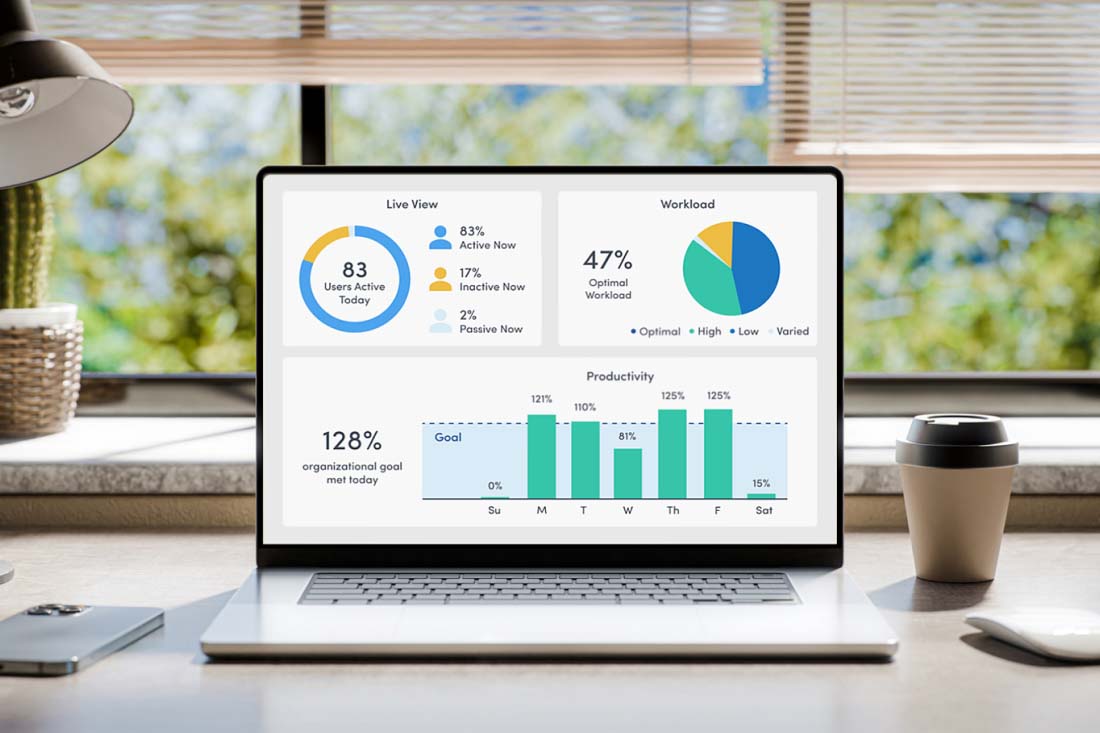Want to know a secret? Talking to employees about productivity can lead to massive benefits. And I’m not just talking about boosting morale. The more productive your people are, the more profitable and competitive your company will be. Employee productivity is so critical to success that Gallup once called our failure to address it “the world’s $7.8 trillion workplace problem.”
Still, it’s a tough task. As managers and leaders, we need to set expectations around this topic. But that can be hard when your workforce is already depleted and exhausted.
The good news? Productivity experts have identified proven strategies every manager can use to improve performance. Whether you’re facing a difficult conversation or want to better support team members, these tips can help.
How to prepare for conversations on productivity
The first step when talking to employees about productivity is simple: Come prepared. If you’re addressing a performance issue, try to determine what’s causing it first — before you schedule a meeting. If it’s a missed deadline, consider the full range of potential causes: Is your employee getting the support they need from other team members? Are they juggling too many projects? Are they battling burnout?
If the cause of a performance issue is obvious and there’s a clear solution, you may be able to avoid a conversation about productivity and skip straight to action. However, sometimes the source of a performance issue is unclear, and requires more investigation.
If you use a workforce analytics tool, you can get additional context about productivity by getting answers to questions like:
- How much time do people spend on focused work vs distractions?
- Which times of day are people most productive?
- Do different people have different methods for working toward the same goals?
- Are workloads evenly distributed, or are some employees carrying more of the burden?
These insights set the stage for helpful conversations with employees about productivity.
Tips for talking to employees about productivity
Remember: When addressing an employee’s performance, the goal is to inspire and motivate — not discourage or deflate. Here are five ways to do just that.
1. Set clear expectations
First, a word of caution: While it’s important to arm yourself with the insights mentioned above, they’re just a starting point. Trust and transparency are also critical. This means you need to remain open-minded any time you talk to an employee about productivity.
Start by asking if expectations are clear. Do they understand the goals you’re working toward? Are they realistic? Where do they need clarity from you? Then use the SMART framework to ensure each goal is:
- Specific: Provide a clear picture of what productivity will look like.
- Measurable: Whether it’s a deadline date or percentage, provide an expected outcome you can measure.
- Attainable: Confirm the productivity goals you’re setting are realistic.
- Relevant: Make sure any productivity gains for an individual will impact productivity for your entire team.
- Timely: Set a realistic timeline for completing any milestones.
2. Show respect and appreciation
What if you could boost employee productivity with just a five-minute conversation? According to Wharton Professor Adam Grant, you can. The trick lies in respect and appreciation. Showing an employee why the work they do matters can improve performance by as much as 142%. This “task significance” not only helps employees understand the impact of their work but also makes them feel respected for their efforts.
3. Don’t blame or shame
When talking to employees about productivity, be careful you don’t fall into the trap of “productivity paranoia.” Many leaders say the shift to hybrid work has made them question how productive people are when they work from home — even though 87% of surveyed employees say the opposite is true. Left unaddressed, this doubt can lead to productivity theater. Team members give the appearance of productivity, but in reality, are wasting valuable time on superfluous meetings and multitasking.
Instead, look for opportunities to celebrate small wins. In one analysis of 238 knowledge workers, researchers found the simple act of making progress on daily tasks can be a powerful motivator. Taking time to recognize achievements, however small they may seem, will help soften the blow when talking about poor performance. It’ll also help high performers stay motivated.
4. Let employees take the lead
Always seek to understand performance issues by asking questions and actively listening. And don’t just wait for problems to surface. Make employee-led conversations a regular part of your 1:1 discussions and team-building sessions. This will not only ensure your employee feels heard but can also help you understand how different people work best.
5. Offer solutions and support
In many instances, employees may just need your “OK” on taking steps to improve productivity. Do they feel pressure to respond instantly to every email and ping? Are they being asked to attend unnecessary meetings? Do they need more time to get into a state of flow? Once you’ve identified problem areas, work together to find solutions. That might mean sharing a timeboxing calendar. Or it could be as simple as scheduling time for deep work when emails and notifications can wait.
Be specific and offer support. For example, you could encourage an employee to decline invitations to meetings they don’t need to attend — and tell them to direct any questions to you.
How to follow up after productivity conversations
Talking to an employee about productivity is never a one-and-done conversation. And it’s not something to do only when you suspect productivity is suffering. To create real progress, you need to work on creating a culture where productivity thrives. How? Use documentation and celebration.
Each conversation should end with established goals, benchmarks and a plan for checking progress. Whether you plan to check in weekly or monthly, decide now what those next steps will be. And don’t just watch for gains. Celebrate them! Progress is a powerful motivator, and employees want to know you appreciate their efforts.
With a solution like ActivTrak to monitor productivity metrics, you can see when there’s an opportunity for improvement — and when it’s time to congratulate someone on a job well done. Sign up for free to get started today.





